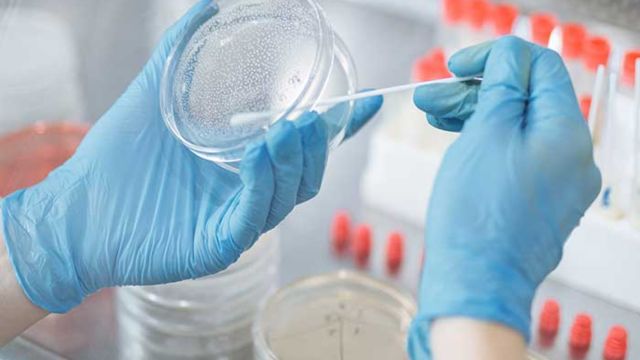One of the most important considerations guiding medical device design and manufacturing is biocompatibility. It speaks to a material’s capacity to carry out its intended use inside the human body free from any negative consequences. Manufacturers of medical devices have to follow biocompatibility criteria to guarantee their products are consistent with legal criteria, safe, and effective. We shall explore in this paper the relevance of biocompatibility, the testing procedure, the regulatory environment, and best practices for producers of medical devices.
Why is Biocompatibility Important in Medical Device Manufacturing?
From basic bandages to sophisticated implants, medical equipment comes into direct touch with the human body quite a bit. Any component utilized in these devices that results in an undesirable biological reaction—that is, irritation, inflammation, or toxicity—may cause major problems, including infections, organ damage, or implant rejection.
The following justifies the need of making sure the components of medical equipment are biocompatible:
- Patient Safety: Biocompatibility helps to prevent harmful reactions that could compromise patient health or even result in life-threatening situations.
- Regulatory Compliance: Regulatory bodies, such as the U.S. Food and Drug Administration (FDA) and European Medicines Agency (EMA), require biocompatibility testing to certify medical devices for sale and use.
- Long-Term Functionality: Biocompatible materials ensure that medical devices function properly over time without degrading or reacting negatively with the body.
Understanding Biocompatibility Testing

Biocompatibility testing examines how it interacts with biological systems. Testing new items as well as those undergoing changes is essential. Different important techniques and procedures are applied to ascertain whether a device is biocompatible:
- In Vitro Testing:
In vitro (or laboratory-based) testing involves the use of cultured cells to evaluate how a material behaves when exposed to biological substances. This can include tests for cytotoxicity, irritation, and genetic toxicity. - In Vivo Testing:
In vivo testing involves implanting the device or material in a living organism, such as a rat or rabbit, to observe the biological response. This method is used to assess the overall compatibility and performance of the device in a biological environment. - Sensitization and Irritation Tests:
These tests focus on determining whether the material used in the device could cause allergic reactions or irritation upon contact with the skin or mucosal tissues. - Chronic Toxicity Testing:
This test examines the potential long-term effects of prolonged exposure to the material. This is particularly important for implants or devices that remain in the body for extended periods. - Hemocompatibility Testing:
For devices that come into contact with blood (such as catheters or stents), it is vital to assess how the material interacts with blood cells. Hemocompatibility tests determine whether the device could cause blood clotting or hemolysis (destruction of red blood cells).
Regulatory Standards for Biocompatibility in Medical Devices
Guidelines and standards for biocompatibility testing in medical device manufacture are established by regulatory agencies such the FDA and the International Organization for Standardizing (ISO). These rules guarantee manufacturers follow best practices in their development procedures and that products are safe for human use.
- ISO 10993:
The ISO 10993 series of standards are internationally recognized guidelines for the biological evaluation of medical devices. The series covers a range of tests, including cytotoxicity, sensitization, implantation, and degradation analysis, to assess the biocompatibility of materials used in medical devices. - FDA 21 CFR Part 820:
The FDA’s Quality System Regulation (QSR) also covers biocompatibility testing. Manufacturers must demonstrate that they have conducted biocompatibility assessments and that their devices meet the necessary safety and quality standards before seeking approval.
Best Practices for Ensuring Biocompatibility in Manufacturing
For medical device manufacturers, achieving biocompatibility involves careful selection of materials, rigorous testing, and compliance with regulatory standards. Here are some best practices to follow:
- Material Selection:
Choose materials that are well-established in the medical field and have a proven record of biocompatibility. Common materials used in medical devices include titanium, stainless steel, polyethylene, and silicone, all of which are known for their compatibility with human tissues. - Collaborate with Experts:
Work closely with experts in biocompatibility testing to ensure that all relevant tests are conducted on the materials used in your devices. These experts can help interpret results and ensure compliance with applicable regulations. - Adhere to Regulatory Guidelines:
Familiarize yourself with and follow regulatory standards, such as ISO 10993 and FDA guidelines, to ensure your medical devices meet safety requirements. Compliance with these standards is crucial for market approval. - Document Testing Results:
Keep detailed records of all biocompatibility testing and results. This documentation is not only vital for regulatory approval but also serves as proof of your commitment to patient safety. - Consider Long-Term Use:
For implants or long-term medical devices, consider the device’s interaction with the body over extended periods. Testing should account for chronic exposure and potential degradation of materials over time.
Conclusion
A pillar of medical device manufacture, biocompatibility guarantees that goods are safe and efficient for patient usage. To ensure that their equipment won’t cause damage when used in medical applications, manufacturers have to follow strict testing procedures and legislative guidelines. Manufacturers may create safe, high-quality devices that enhance patient outcomes by choosing appropriate materials, cooperating with biocompatibility specialists, and following best practices.
Safety and compliance are vital in the medical sector, and at J&J Supplies we know this. Visit our website to keep informed on the most recent news, analysis, and best practices about manufacturing, clinical engineering, and medical supplies. We are here to help you negotiate the changing terrain of medical technology if you are seeking dependable information or professional guidance. Stay educated and stay compliant!








